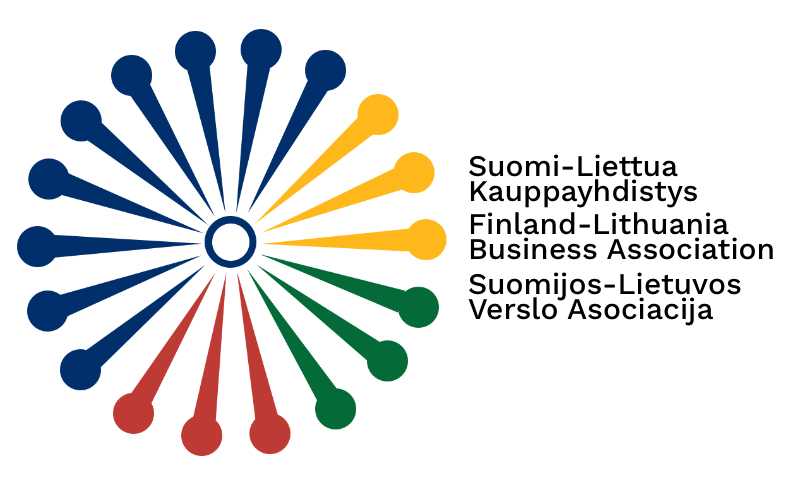Interview with H.E. Mr. Giedrius KAZAKEVIČIUS, Ambassador of Lithuania to Finland
Trade between Finland and Lithuania has developed positively during the last years. How do you see the development of our trade relations in the coming years?
Lithuania and Finland enjoy intensive and dynamic economic partnership. Bilateral trade has reached 1,34 billion EUR in 2019 and volumes are constantly growing by approximately 5% every year. I am sure, that intensification of the regional cooperation and dynamic in the EU will allow us to keep this positive tendencies despite pandemic impact.
Which Finnish goods and services would have demand in Lithuania and which Lithuanian ones in Finland according to your opinion? (if you want you can speak only about Lithuanian goods).
As of today our trade balance with Finland is negative. Lithuania import from Finland was 816.4 million EUR in 2019 and export 529.4 million EUR. We see some potential to for more intensive cooperation. Particular focus needs to be given to the following industry sectors: ICT, engineering industry and life sciences industry. Also we see unused potential in furniture industry and construction sector.
Which kinds of start-ups communities you have in Lithuania – if a Finnish start-up company would like to start doing business in Lithuania, is there any support for foreign start-ups? If not – you can concentrate on describing the start-ups in Lithuania.
Lithuania‘s financial technologies [FinTech] sector rapidly developing in Lithuania. 2 years ago Lithuania set itself the target to become the EU’s No. 1 Fintech destination. Main advantages: quick company set-up, supportive regulator, excellent ICT infrastructure. More than 170 FinTech companies are active in Lithuania today, and 100 still in the pipeline. Finnish FinTech start-ups are enjoying favorable doing business conditions in Lithuania too. Latest – Saldo Finance Plc, a Finnish FinTech company creating responsible lending solutions, has announced plans to double its product development team in Vilnius over the next year. Saldo also expects to start lending operations in Lithuania in January of next year.
Life during and after Covid-19 – which kind of support Lithuanian and foreign companies can receive in Lithuania? How the companies see the future?
All foreign companies registered in Lithuania are Lithuanian legal entities and can use all benefits we have in country. Lithuania’s support measures to help citizens and companies during the significant economic impact of the coronavirus pandemic where very similar to measures that other EU countries implemented. First at all we have to help businesses to go through these turbulent times, stay functional, competitive to ensure sustainable grow of Lithuanian economy in the future. The latest three quarters results of GDP change in EU shows that Lithuania, same as other Nordic countries, had one of the smallest contraction of GDP in EU approx. 2-2,2%. We hope that final results of 2020 will be similar and we expect 3% grow next year.
Please, tell your personal aims during your time as an Ambassador in Finland.
My aim is to keep existing cooperation level and expand it to new sectors. I am looking for possibilities for cooperation in innovative economic sectors. And there is a strong potential in cooperation with Finland, – especially in various R&D and “Horizon 2020” projects, cooperation between Lithuanian and Finland’s universities.
The holiday season is coming – how would you describe the Lithuanian way of enjoying the holiday season?
Christmas holiday season is spanned by a month-long Christmas period, gradually gaining momentum since late November. At that time every municipality sets up decorated Christmas trees, nativity scenes, and electric decorations, while people follow suit in their homes.
Lithuania the Christmas Eve (Kūčios, December 24th) is even more celebrated than the Christmas itself and it is also a day off the work. That evening whole family reunites to eat a special vegetarian (fish permitted) supper that must include at least 12 meals, and every participant should taste each meal. A prayer is said before that supper. The first meal is always the flatbread wafers (Lithuanian: Kalėdaitis). They are identical in the recipe to the Holy Communion and inscribed with Christian imagery. Everyone starts with a separate wafer but is expected to break it down and give every other participant its piece. Only after all the pieces are consumed the other meals may be tasted.
Just like elsewhere the children receive their presents during Christmas. The Santa Claus, known in Lithuanian as Kalėdų senelis (The Christmas grandfather), visits at night between 24th and 25th and leaves the presents under the Christmas tree of the home. Grownups exchange the presents on Christmas Eve with their family and on another specified date with their friends and co-workers.
H.E. Mr. Giedrius KAZAKEVIČIUS,
Ambassador of Lithuania to Finland

Contact person for questions:
Anne Hatanpää,
Finnish-Lithuanian Business Association
Secretary General
anne.hatanpaa ( a ) chamber.fi


